Trailing Abutilon Abutilon × milleri hort.
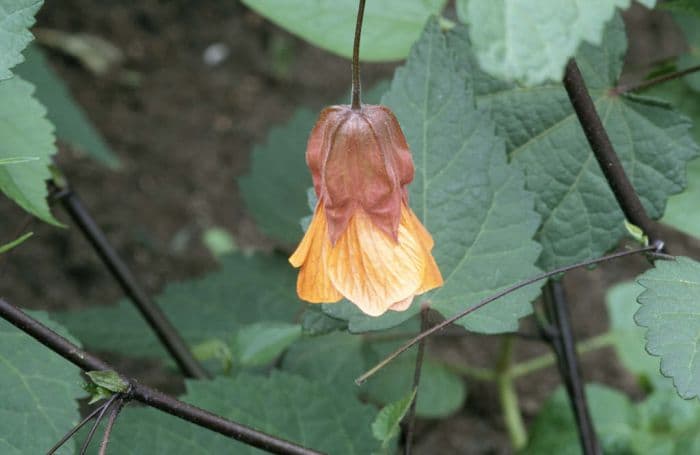
ABOUT
Abutilon × milleri hort., commonly known as the Trailing Abutilon, is a charming plant notable for its unique and appealing aesthetic. It features a multitude of bell-shaped flowers which dangle elegantly from its branches. These flowers exhibit a brilliant color, typically a vivid combination that could include shades of orange, yellow, or pink, with a contrasting center or throat that often appears in a deeper or complementary hue. The foliage of the Trailing Abutilon is equally attractive, consisting of broad, heart-shaped leaves with a somewhat velvety texture. The leaves exhibit a rich green color with defined veins that may sometimes give them a slightly quilted appearance. The leaf edges are often slightly toothed, lending the foliage a delicate and somewhat lacy outline. In addition to its floral and foliage display, the plant possesses stems that arch gracefully, contributing to its overall trailing habit. The stems often show a certain degree of woodiness at their base, with newer growth being more green and pliable. Overall, the Trailing Abutilon possesses a soft, almost tropical appeal, despite not being discussed in terms of its specific dimensions in this description. Its flowering display and attractive leaves make it a favored choice for ornamental purposes in suitable climates.
About this plant
 Names
NamesFamily
Malvaceae
Synonyms
Trailing Abutilon, Miller's Abutilon, Hybrid Abutilon
Common names
Abutilon × milleri hort.
 Toxicity
ToxicityTo humans
The Abutilon x milleri, commonly known as Trailing Abutilon, is not widely recognized as a poisonous plant to humans. There is limited information on the toxicity of this specific hybrid to people. However, as with any plant, it is generally advisable to avoid ingesting parts of ornamental plants because they can sometimes cause adverse reactions such as gastrointestinal discomfort if consumed in large quantities. Always consult medical professionals or local poison control if ingestion occurs and there is concern for poisoning.
To pets
The Trailing Abutilon is not known to be toxic to pets such as dogs and cats. It does not appear on common lists of plants that are poisonous to domestic animals. However, as with humans, it's always best to prevent pets from ingesting plants, as they can cause mild stomach upset or an allergic reaction in some animals. If a pet ingests part of the plant and you notice any signs of distress, consult a veterinarian.
 Characteristics
CharacteristicsLife cycle
Perennials
Foliage type
Evergreen
Color of leaves
Green
Flower color
Orange
Height
3-6 feet (0.91-1.83 meters)
Spread
3-6 feet (0.91-1.83 meters)
Plant type
Shrub
Hardiness zones
9
Native area
Hybrid
Benefits
 General Benefits
General Benefits- Ornamental Value: Abutilon x milleri, commonly known as Trailing Abutilon, is often used in gardens and landscapes for its attractive bell-shaped flowers and decorative foliage.
- Wildlife Attraction: The flowers of the Trailing Abutilon are known to attract pollinators such as bees, butterflies, and hummingbirds, contributing to the ecological health of the garden.
- Shade Tolerance: This plant can tolerate partial shade, making it a versatile choice for gardeners with shaded areas.
- Foliage Interest: In addition to its flowers, Trailing Abutilon has interesting leaves that add texture and greenery to garden spaces.
- Container Gardening: It is well-suited to growing in containers or hanging baskets, which is beneficial for those with limited garden space or who wish to decorate patios and balconies.
- Fast Growth: Trailing Abutilon has a relatively quick growth rate, allowing gardeners to establish and enjoy the plant's presence in a shorter amount of time.
- Year-Round Bloom: In the right conditions, it can produce flowers throughout the year, providing continuous visual interest.
 Medical Properties
Medical PropertiesThis plant is not used for medical purposes.
 Air-purifying Qualities
Air-purifying QualitiesThis plant is not specifically known for air purifying qualities.
 Other Uses
Other Uses- Living Fences: Abutilon × milleri, or flowering maple, can be used as a living fence or privacy screen due to its fast growth and dense foliage.
- Fiber Source: In some cultures, the bark of the flowering maple is used to make fiber for craft purposes.
- Ornamental Container Plant: Due to its attractive leaves and flowers, it is commonly used in containers for patios and balconies.
- Topiary Specimen: Flowering maple can be trained and pruned into decorative shapes, making it a good candidate for topiary gardens.
- Shade Provider: When planted in groups, it can provide a considerable amount of shade, which can be especially valuable in urban gardens.
- Erosion Control: Its root system can help stabilize soil on slopes, thereby controlling erosion.
- Support for Climbers: Since flowering maple can grow tall and sturdy, it can act as a support structure for climbing plants or vines.
- Nectar Source for Pollinators: The flowers are a source of nectar for bees, butterflies, and other pollinators, enhancing local biodiversity.
- Photography Subject: Due to its picturesque appearance, flowering maple is often used by photographers as a subject for botanical and garden photography.
- Educational Resource: It can be used in schools or educational gardens to teach about plant biology and hybridization due to its crossbred nature.
Interesting Facts
 Feng Shui
Feng ShuiThe plant Abutilon × milleri, commonly known as the Trailing Abutilon, is not used in Feng Shui practice.
 Zodiac Sign Compitability
Zodiac Sign CompitabilityThe Trailing Abutilon is not used in astrology practice.
 Plant Symbolism
Plant Symbolism- Protection: With its robust nature, Abutilon × milleri, commonly known as Trailing Abutilon, often symbolizes shelter and protective environments much like the protective nature of the foliage which offers a canopy in gardens.
- Beauty and Uniqueness: Trailing Abutilon is admired for its beautiful bell-shaped flowers, often symbolizing the appreciation of unique beauty and diversity in life.
- Domestic Comfort: Given its common use in ornamental horticulture, particularly in patio containers and hanging baskets, it is sometimes associated with domestic comfort and the warmth of home.
- Subtlety: The delicate, yet noticeable features of the Trailing Abutilon flowers can represent the value of subtlety in conveying messages or feelings without overwhelming the recipient.
 Water
WaterThe Trailing Abutilon should be watered regularly, allowing the top inch of soil to dry out between waterings. Depending on the environmental conditions, this usually translates to once a week. When watering, provide enough water so that it runs through the drainage holes — this could be approximately 16-32 ounces for a medium-sized pot. During the active growing season in spring and summer, it might need more frequent watering, while in the cooler months, water less frequently. Always check the soil moisture level before watering to avoid overwatering.
 Light
LightThe Trailing Abutilon thrives best in bright, indirect sunlight. It can tolerate some direct sun, but too much direct sunlight can scorch the leaves. A spot near an east or west-facing window is ideal, providing it with a few hours of gentle morning or evening sun combined with the rest of the day filled with bright ambient light.
 Temperature
TemperatureThe Trailing Abutilon prefers warm temperatures, thriving between 65 to 75 degrees Fahrenheit. It should not be exposed to temperatures below 50 degrees Fahrenheit as it can cause damage to the plant. The ideal temperature range ensures healthy growth and blooming.
 Pruning
PruningPruning the Trailing Abutilon encourages bushier growth and more blooms. It should be pruned in the early spring or late winter before the onset of new growth. Remove any dead or damaged branches, and you can also cut back limbs to shape the plant or control its size. Pruning can be done every year or as needed to keep the plant looking its best.
 Cleaning
CleaningAs needed
 Soil
SoilThe flowering maple (Abutilon × milleri hort.) thrives in a well-draining soil mix that's rich in organic matter, such as a blend of two parts peat moss or coco coir, one part perlite or sand, and one part loam. The ideal pH for this plant's soil should be slightly acidic to neutral, ranging from 6.0 to 7.0.
 Repotting
RepottingFlowering maples should be repotted every 1-2 years, ideally during springtime. It's important to increase the pot size gradually, only going one size up from the current pot to allow for healthy root growth.
 Humidity & Misting
Humidity & MistingThe ideal humidity level for a flowering maple is moderate to high. Aim for a humidity range between 50-60% for optimal growth.
 Suitable locations
Suitable locationsIndoor
Place in bright, indirect light, away from drafts.
Outdoor
Plant in partial shade with shelter from winds.
Hardiness zone
9-11 USDA
 Life cycle
Life cycleThe Abutilon × milleri, commonly known as Miller's Mallow, begins its life as a seed, which germinates in warm, moist soil, a process that typically takes one to two weeks. Upon sprouting, the seedling emerges with its initial set of leaves and begins to establish a root system. As it enters the vegetative stage, Miller's Mallow develops a woody stem, broader leaves, and a bushy form, a phase that can continue for several weeks to months depending on growing conditions. Transitioning to the reproductive stage, the plant produces distinctive lantern-like flowers that can be yellow, orange, or red, and this blooming period can last from spring to fall in the right climate. After pollination, the flowers give way to seed pods, which ripen and eventually release seeds, completing the reproductive cycle. Throughout its life, Miller's Mallow may experience multiple flowering cycles, especially in mild climates where it can continue to grow as a perennial.
 Propogation
PropogationPropogation time
Spring-Early Summer
Abutilon × milleri, commonly known as Trailing Abutilon or Miller's Abutilon, is commonly propagated through softwood cuttings. The ideal time to take cuttings for propagation is during spring or early summer when the plant is actively growing. To propagate, a healthy, non-flowering stem approximately 4 to 6 inches (10 to 15 cm) long is selected. The lower leaves are removed, and the cut is made just below a node. The cut end is often dipped in a rooting hormone to encourage root growth, and then the cutting is placed in a pot with well-draining soil or a mixture specifically for cuttings. The soil should be kept moist, and the cutting should be placed in indirect light. Roots typically develop within a few weeks, and after a strong root system has established, the new Trailing Abutilon can be transplanted to a larger container or its final location.
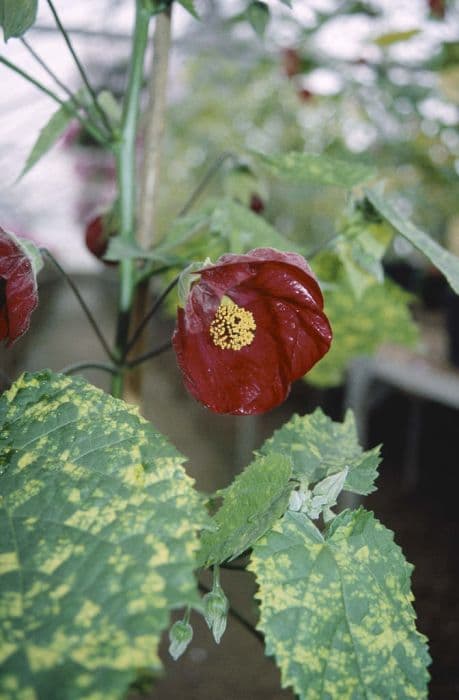
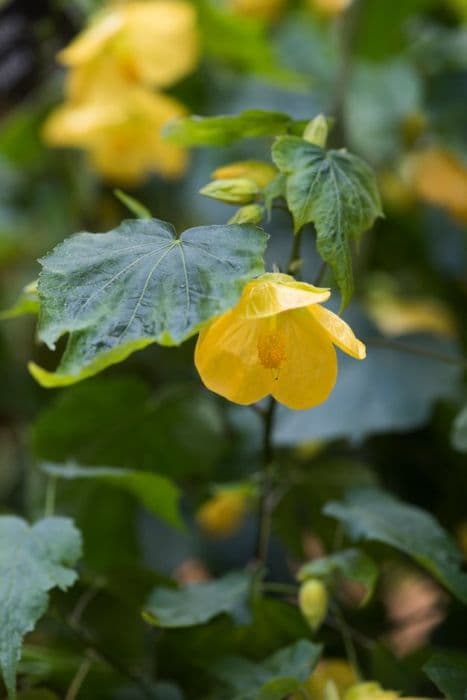
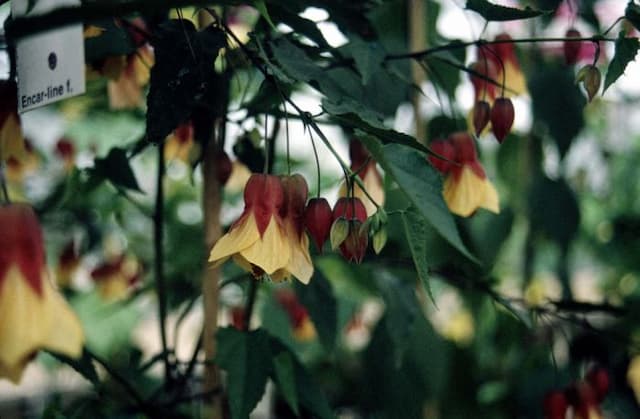
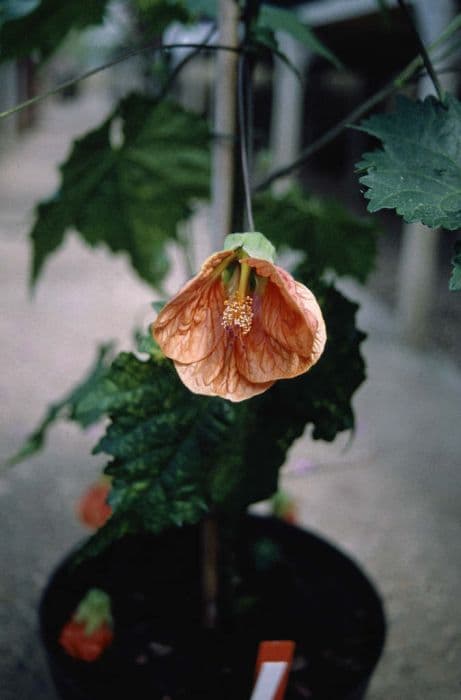

![Abutilon [Yellow Trumpet]](/_next/image?url=https%3A%2F%2Fplants-admin.emdemapps.com%2Fimages%2Fplants%2F%2Fimages%2F604b5caa8b4fb.png&w=640&q=75)


